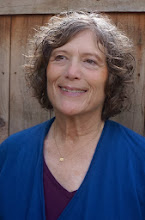 Some of us have an insatiable craving to understand the land around us. Sometimes, amazing books come along to help in this task. One such is Robert Edminster’s Streams of the San Joaquin. Written about California’s “El Valle De Los Tulares,” the San Joaquin Valley, this self-published gem reflects a lifetime of scholarly, on the ground observation of his home place, a part of California not often appreciated. Almost every point he makes is accompanied by an illuminating color photo.
Some of us have an insatiable craving to understand the land around us. Sometimes, amazing books come along to help in this task. One such is Robert Edminster’s Streams of the San Joaquin. Written about California’s “El Valle De Los Tulares,” the San Joaquin Valley, this self-published gem reflects a lifetime of scholarly, on the ground observation of his home place, a part of California not often appreciated. Almost every point he makes is accompanied by an illuminating color photo.There’s understated poetry in his story about his uncle’s dislike of the family farm, saying to his father, “Jack, Jack, why did you move to this godforsaken country?” I wondered about this as a boy because, not knowing anything else, I thought it was a pretty good place….Now, after more than 50 years of research…, I still think of the wet marshes and dry alkaline plains of the San Joaquin as “a pretty good place.”
If only there had been a Robert Edminster for every part of California.





